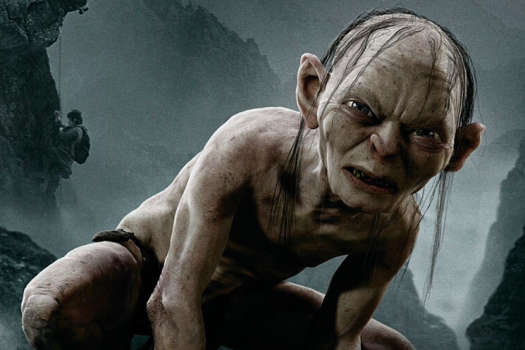Wes Craven's Shocker is one of the horror master's lesser-known and less successful experiments in genre filmmaking. Released in 1989, not long after The Serpent and the Rainbow had garnered some mainstream critical acclaim, this ersatz-parody of Craven's most popular cult classic, A Nightmare on Elm Street, wasn't received particularly well, getting mixed to negative reviews and earning little at the box office.
One of the biggest obstacles for Shocker at the time was communicating its rather convoluted premise to potential viewers in a trailer format. In essence, this dark comedy is about Jonathan Parker (Peter Berg), a well-adjusted, popular teenager that discovers he's psychically linked to Horace Pinker (Mitch Pileggi), a serial killer that turns out to be his estranged father — but that's just the basic premise.
During the first arc of the film, Jonathan experiences nighttime hallucinations that ultimately lead him to the hideout of a known serial killer. The killer, who preys on happy families — perhaps a knowing nod to the horror climate of the '80s, wherein the changing landscape of the nuclear family wreaked havoc on the North American identity — ultimately kills Jonathan's mother and siblings, leaving him and his father behind to watch him fry in the electric chair. This leads into a substantial narrative shift, which finds Pinker living on in electrical currents, leaping from body to body and continuing his killing spree from beyond the grave.
As Shocker presses forward into its final act, Jonathan's girlfriend Alison (Cami Cooper) is killed by Pinker and inexplicably pops up in spirit form to fight the killer, leading to an elaborate television-wave blowout that finds our protagonist and antagonist leaping through TV channels, fighting in the background of many popular programs.
At the time, the metaphor of television waves as representation of evil was standard. People perceived it as an opiate and a controlling mechanism, which isn't entirely dissimilar to how we perceive social media in a present context. But the rather superficial manner in which this theme is handled here, suggesting that the glorification of violence on television allows a killer to live on, is a tad hypocritical given how gratuitous and indulgent Shocker ultimately is.
Another problem with this rather complicated ode to the "blame your parents" ethos that Craven continually reiterated throughout his career is how specific it is to its time. Shocker doesn't hold up well. The bizarre melding of psychic links, spectral projections and "Ghost in the Machine" notions doesn't make a great deal of sense, and since the film is far more interested in titillating the audience's funny bone, eventually featuring a sequence where Jonathan controls Pinker with a remote control, there's ultimately no effort to substantiate or justify this hybrid of concepts and ideas. In a modern context, since these ideas are mashed together haphazardly and the visual effects and modes of battle ultimately look cheesy, this leaves the building blocks exposed for what they are.
The supplemental interviews with Mitch Pileggi and Cami Cooper don't really address the themes at all, just as the vintage set footage and trailers provide little insight about intentions. But Cooper probably has the most grounded perspective on the material, talking about how her unconventional role — one that actually gave a female character a bit of fighting power — was probably the only opportunity she was offered in her brief acting career to have a personality. But while her interview segment is quite interesting and telling, outlining the limited opportunity for women to play anything but fetish objects and girlfriends in film, it really doesn't have much to do with the actual film, save her quiet amusement that people still recognize her.
(Shout! Factory)One of the biggest obstacles for Shocker at the time was communicating its rather convoluted premise to potential viewers in a trailer format. In essence, this dark comedy is about Jonathan Parker (Peter Berg), a well-adjusted, popular teenager that discovers he's psychically linked to Horace Pinker (Mitch Pileggi), a serial killer that turns out to be his estranged father — but that's just the basic premise.
During the first arc of the film, Jonathan experiences nighttime hallucinations that ultimately lead him to the hideout of a known serial killer. The killer, who preys on happy families — perhaps a knowing nod to the horror climate of the '80s, wherein the changing landscape of the nuclear family wreaked havoc on the North American identity — ultimately kills Jonathan's mother and siblings, leaving him and his father behind to watch him fry in the electric chair. This leads into a substantial narrative shift, which finds Pinker living on in electrical currents, leaping from body to body and continuing his killing spree from beyond the grave.
As Shocker presses forward into its final act, Jonathan's girlfriend Alison (Cami Cooper) is killed by Pinker and inexplicably pops up in spirit form to fight the killer, leading to an elaborate television-wave blowout that finds our protagonist and antagonist leaping through TV channels, fighting in the background of many popular programs.
At the time, the metaphor of television waves as representation of evil was standard. People perceived it as an opiate and a controlling mechanism, which isn't entirely dissimilar to how we perceive social media in a present context. But the rather superficial manner in which this theme is handled here, suggesting that the glorification of violence on television allows a killer to live on, is a tad hypocritical given how gratuitous and indulgent Shocker ultimately is.
Another problem with this rather complicated ode to the "blame your parents" ethos that Craven continually reiterated throughout his career is how specific it is to its time. Shocker doesn't hold up well. The bizarre melding of psychic links, spectral projections and "Ghost in the Machine" notions doesn't make a great deal of sense, and since the film is far more interested in titillating the audience's funny bone, eventually featuring a sequence where Jonathan controls Pinker with a remote control, there's ultimately no effort to substantiate or justify this hybrid of concepts and ideas. In a modern context, since these ideas are mashed together haphazardly and the visual effects and modes of battle ultimately look cheesy, this leaves the building blocks exposed for what they are.
The supplemental interviews with Mitch Pileggi and Cami Cooper don't really address the themes at all, just as the vintage set footage and trailers provide little insight about intentions. But Cooper probably has the most grounded perspective on the material, talking about how her unconventional role — one that actually gave a female character a bit of fighting power — was probably the only opportunity she was offered in her brief acting career to have a personality. But while her interview segment is quite interesting and telling, outlining the limited opportunity for women to play anything but fetish objects and girlfriends in film, it really doesn't have much to do with the actual film, save her quiet amusement that people still recognize her.




